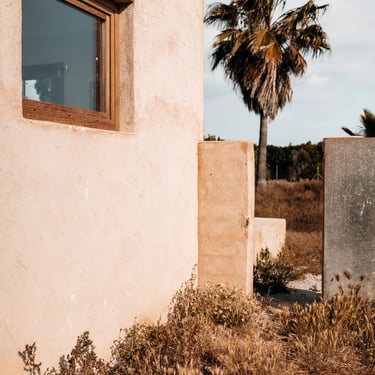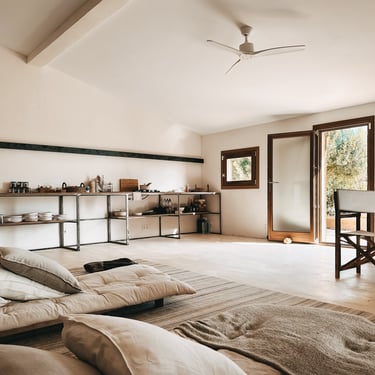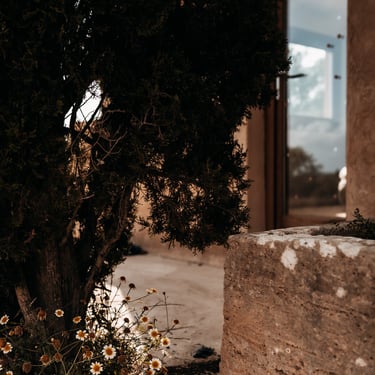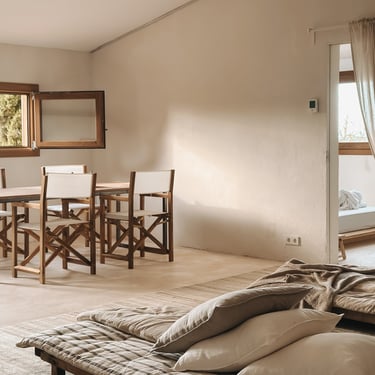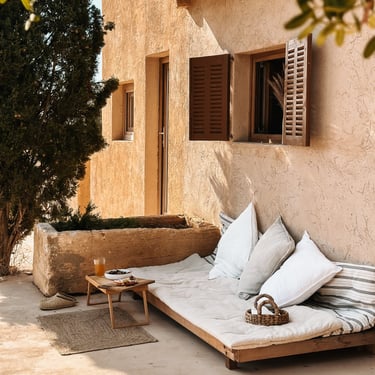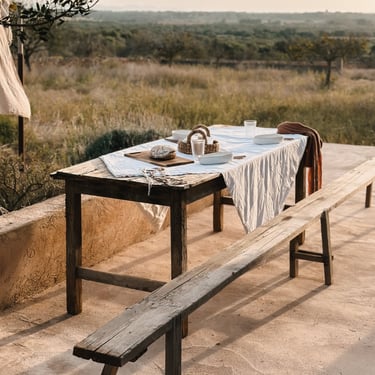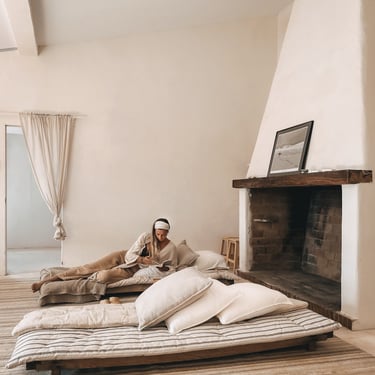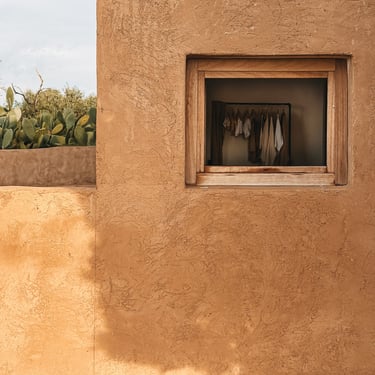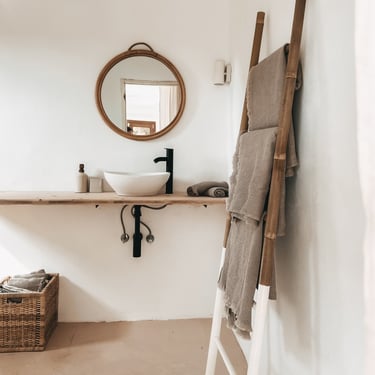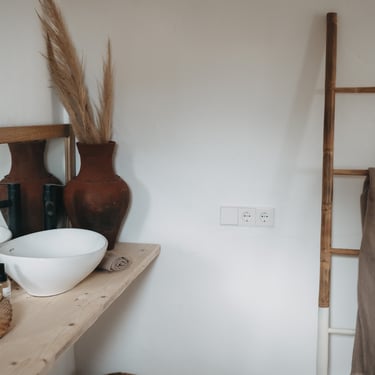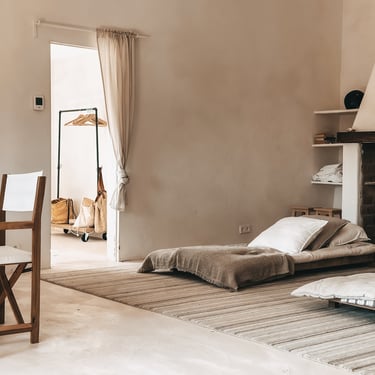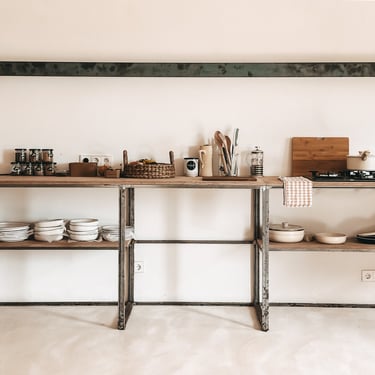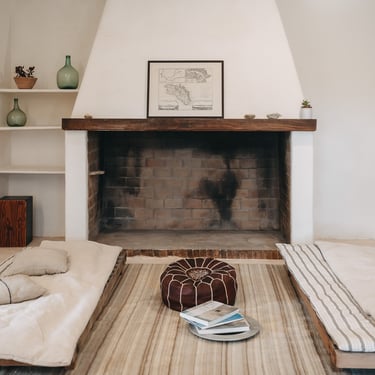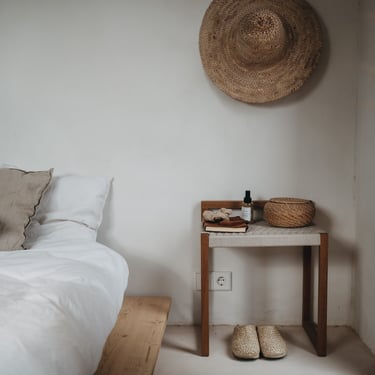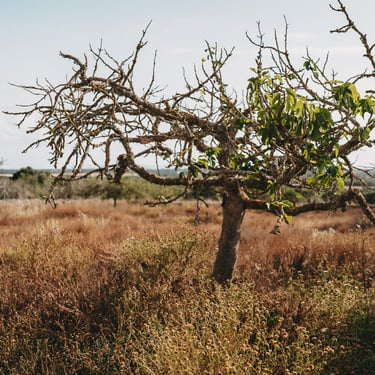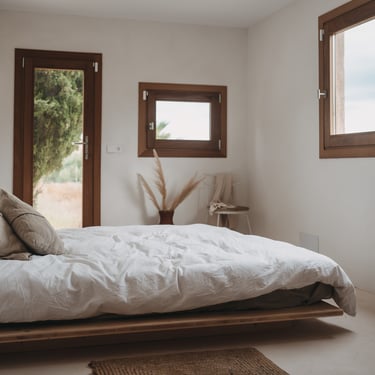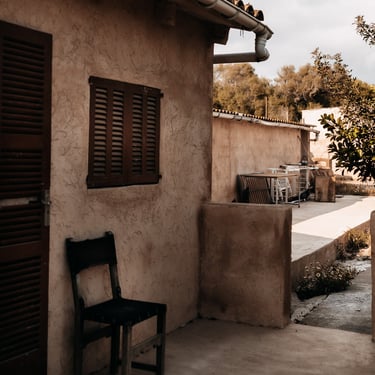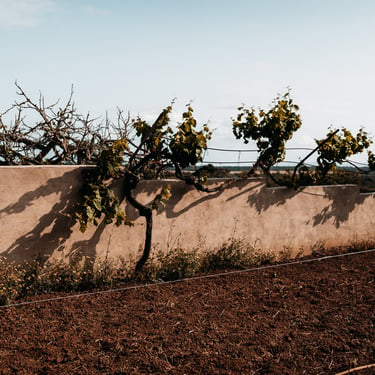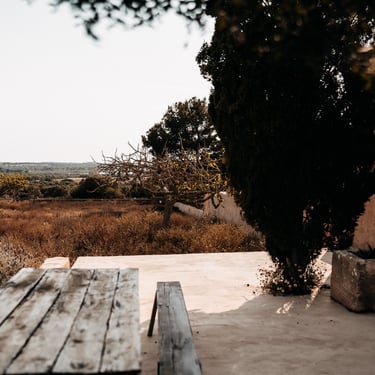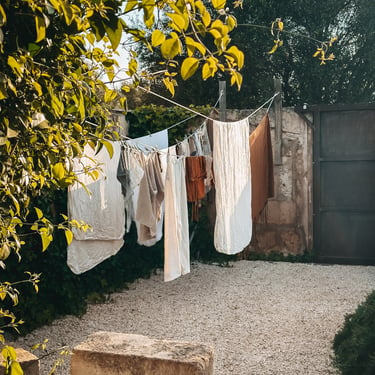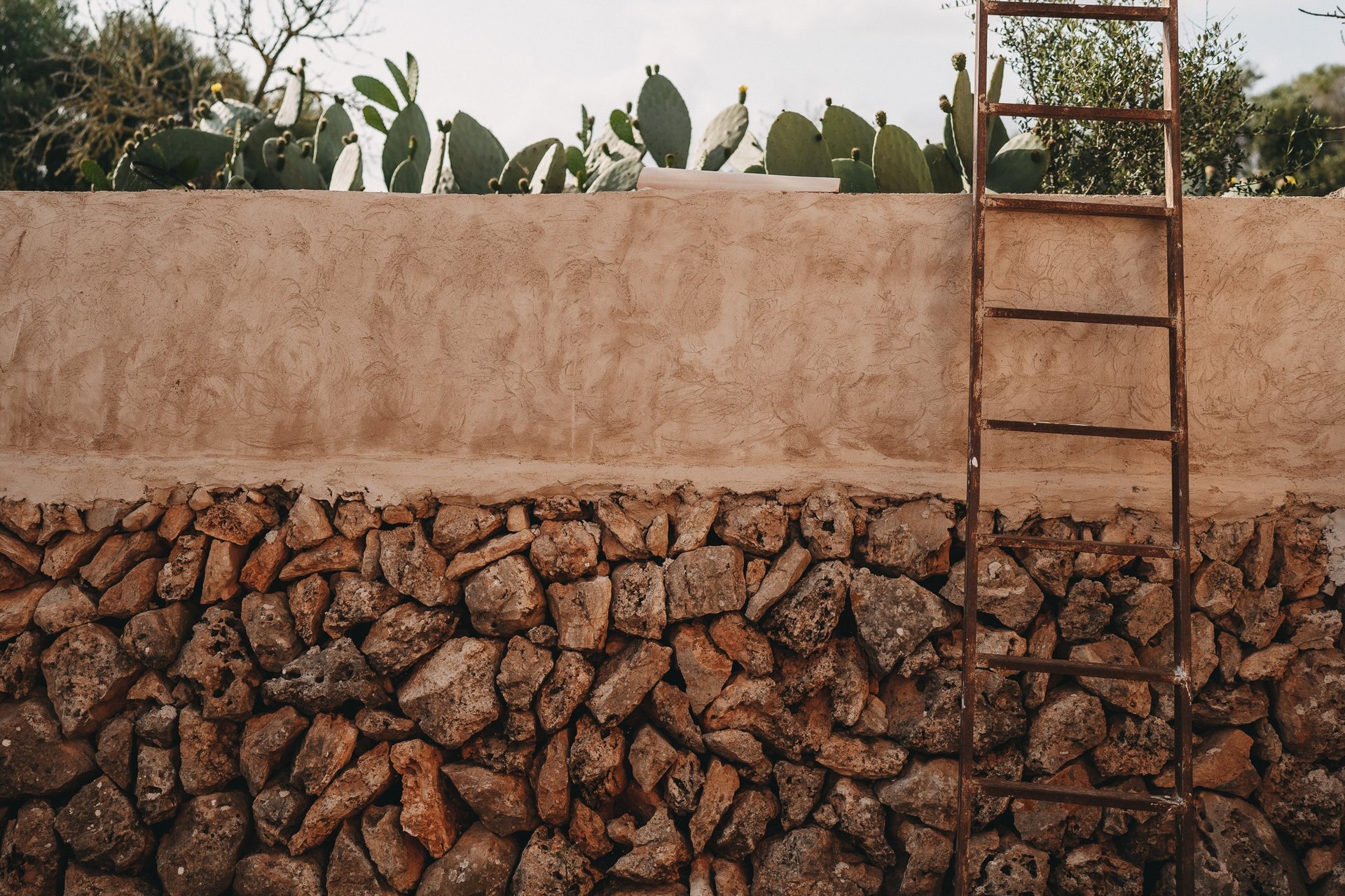
Vernacular Architecture
This project explores vernacular architecture as a sustainable, place-based approach to building—rooted in local materials, traditional knowledge, and cultural identity.
Project Can Sa Marina - Ses Salinas, Mallorca
At the heart of the property stands a former casa de aperos, initially repurposed as a testing ground for vernacular materials and low-impact construction techniques. Conceived as a space of balance and beauty, it now hosts meditation, yoga, and cacao ceremonies—a gathering place for friends and close community members seeking a deeper connection with nature.
Fully off-grid and self-sustaining, Can Sa Marina runs entirely on solar energy and rainwater collection, with no external water or power supply. The project has no commercial purpose; instead, it offers a quiet environment for reflection and experimentation.
Can Sa Marina continues to explore the integration of traditional building knowledge and regenerative land use, testing how local materials, climate-responsive architecture, and agro-ecological practices can be combined to support sustainable, place-based living.
Vernacular architecture reflects the deep relationship between communities and their environments. Built with locally available materials and traditional techniques, these structures respond to climate, landscape, and cultural needs—without relying on industrial systems or imported design standards.
This approach offers low-impact, practical solutions to contemporary challenges in housing, sustainability, and heritage conservation. It prioritizes efficiency, resilience, and adaptability—qualities often overlooked in modern construction. As traditional building knowledge declines, the urgency grows to preserve and apply it not only as cultural heritage, but as a viable, regenerative alternative to extractive development models.
The project explores how these practices can be revived, adapted, and integrated into contemporary life—supporting local economies, reducing environmental footprints, and strengthening cultural continuity and community identity.
